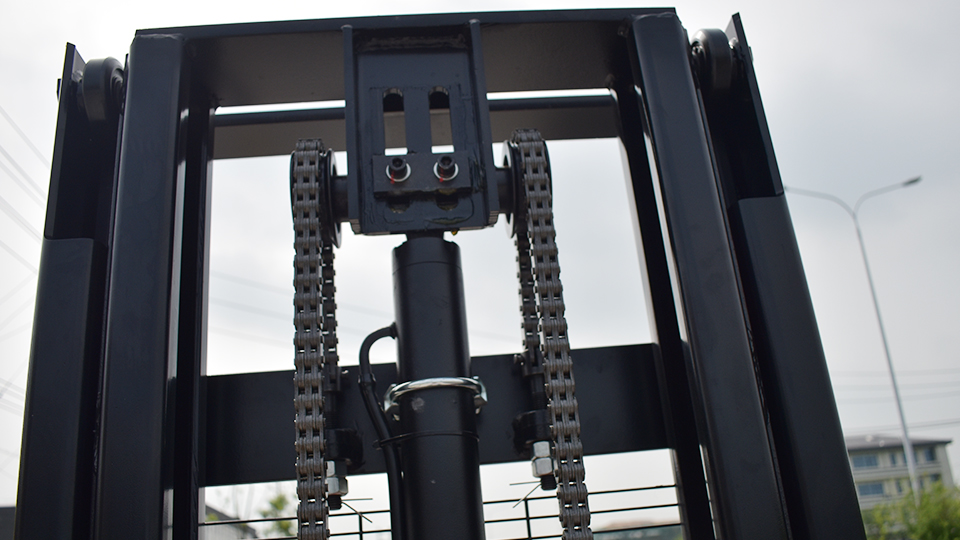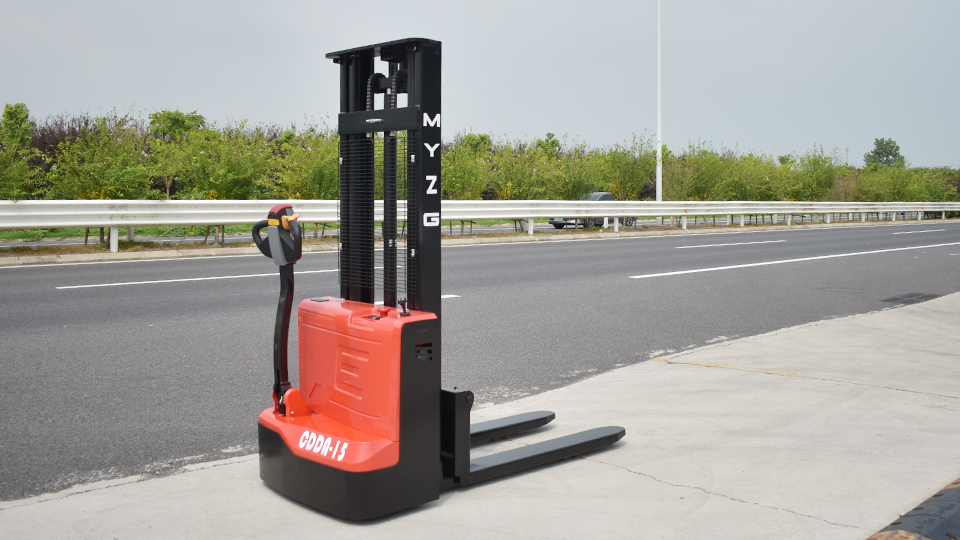
Forklift vs. Stacker: Decoding the Differences in Material Handling
In the bustling world of warehouses, manufacturing plants, and distribution centers, the efficient movement and storage of materials are paramount. Two key pieces of equipment frequently encountered in these environments are forklifts and stackers. While both serve the fundamental purpose of lifting and transporting loads, they possess distinct characteristics, capabilities, and applications. Understanding the nuances between a forklift and a stacker is crucial for businesses to make informed decisions about their material handling fleet, optimizing efficiency, safety, and cost-effectiveness.
This technical article will delve into the core differences between forklifts and stackers, examining their design, functionality, lifting capacity, maneuverability, operational environment, cost considerations, and the specific tasks for which each is best suited. By dissecting these aspects, we aim to provide a comprehensive understanding of these essential material handling tools.
Defining the Core Functionality
At their most basic, both forklifts and stackers are powered industrial trucks designed to lift and move materials. However, the way they achieve this and the scope of their capabilities differ significantly.
Forklift: A forklift, also known as a fork truck or lift truck, is a versatile machine primarily used for lifting, carrying, and transporting heavy loads over short distances. Its defining feature is the pair of powered, adjustable forks at the front, mounted on a mast that can be raised and lowered. Forklifts are designed for a wide range of tasks, including loading and unloading trucks, moving pallets around a warehouse, stacking goods at various heights, and even handling specialized attachments for non-palletized loads. They typically offer a combination of lifting height, load capacity, and maneuverability, making them a workhorse in many industrial settings. Operators usually sit or stand within the machine while operating it.
Stacker: A stacker, often referred to as a pedestrian stacker or walkie stacker, is a more compact and often less powerful machine primarily designed for lifting and stacking palletized goods in warehouses and storage areas. Unlike forklifts where the operator typically rides on the machine, stacker operators usually walk behind or beside the unit, guiding it with a handle. Stackers excel in vertical lifting and maneuvering in tighter spaces due to their smaller footprint and tighter turning radius. While they can transport loads horizontally over short distances, their primary strength lies in efficiently stacking and retrieving goods from racking systems.

Key Differences in Design and Mechanics
The fundamental differences in their intended use translate into distinct design and mechanical characteristics:
1. Operator Position and Control:
Forklift: Typically features a dedicated operator compartment where the driver sits or stands, providing greater control and stability, especially when handling heavier loads and traveling longer distances. Controls for lifting, tilting, and driving are integrated within this compartment.
Stacker: Usually operated by a pedestrian who walks behind or alongside the unit, steering with a long handle that incorporates controls for lifting and traveling. Some larger stackers may have a small platform for the operator to stand on for short travel distances.
2. Mast and Lifting Mechanism:
Forklift: Possesses a robust mast structure that can extend to significant heights, allowing for multi-level stacking. The lifting mechanism is typically hydraulic, providing substantial lifting power. Tilting mechanisms are also common, enabling operators to stabilize loads.
Stacker: While also utilizing a mast and hydraulic lifting system, stacker masts are generally less tall than those on forklifts, limiting the maximum stacking height. Tilt functionality is less common on basic stacker models.
3. Stabilizing Features:
Forklift: Employs various stabilizing features, including a wider wheelbase and counterweights (in counterbalance forklifts) to offset the load's weight and maintain stability during lifting and transport. Outrigger arms are also used in some reach truck and straddle stacker designs.
Stacker: Relies on a more compact design with outrigger legs that straddle the pallet to provide stability during lifting. Counterweights are less prominent or absent in pedestrian stackers.
4. Power Source:
Forklift: Can be powered by internal combustion engines (diesel, gasoline, LPG) for heavy-duty outdoor applications or electric motors (battery-powered) for indoor use, offering higher power and longer operating cycles.
Stacker: Primarily powered by electric motors and batteries, making them suitable for indoor environments with noise and emission restrictions. Battery charging is typically simpler and can often be done via standard mains power.
5. Size and Maneuverability:
Forklift: Generally larger and requires wider aisles for maneuvering due to its turning radius and operator compartment.
Stacker: Significantly more compact with a tighter turning radius, making it ideal for navigating narrow aisles and congested warehouse environments.
Performance Characteristics: Lifting Capacity and Height
The intended applications also dictate the performance capabilities of forklifts and stackers:
Lifting Capacity:
Forklift: Offers a much wider range of lifting capacities, from as low as 1 ton (2,000 lbs) to upwards of 50 tons for specialized heavy-duty models. This allows them to handle a vast array of load weights.
Stacker: Typically has a lower lifting capacity, generally ranging from 1 to 2 tons (2,000 to 4,000 lbs). This capacity is sufficient for most palletized goods in standard warehousing operations but limits their ability to handle extremely heavy items.
Lifting Height:
Forklift: Can achieve significantly higher lifting heights, with some reach truck and very narrow aisle (VNA) forklifts capable of reaching over 30 feet. This is crucial for maximizing vertical storage space in high-bay warehouses.
Stacker: Has a more limited lifting height, often reaching up to 10-15 feet. This is suitable for stacking in lower racking systems commonly found in smaller warehouses or specific zones within larger facilities.
Operational Environment and Applications

The design and performance characteristics make each type of equipment better suited for specific operational environments and tasks:
Forklift:
Versatile: Can be used both indoors and outdoors (depending on the power source and tire type).
Heavy Lifting: Ideal for handling heavy and bulky loads.
Longer Distances: Suitable for transporting materials over longer distances within a facility.
Loading/Unloading: Efficiently loads and unloads trucks and trailers.
Varied Attachments: Can accommodate a wide range of attachments for handling non-palletized goods like drums, rolls, and clamps.
Common Applications: Warehouses, construction sites, manufacturing plants, shipping yards, and any environment requiring heavy lifting and material transport.
Stacker:
Indoor Use: Primarily designed for indoor operation on smooth surfaces. Electric power eliminates emissions and reduces noise.
Space Optimization: Excellent for maximizing storage density in narrow aisles and confined spaces.
Vertical Stacking: Efficiently stacks and retrieves pallets from racking systems at lower to medium heights.
Light to Medium Loads: Well-suited for handling standard palletized goods within their capacity limits.
Cost-Effective: Generally lower purchase and maintenance costs compared to forklifts.
Ease of Use: Often easier to learn and operate than a forklift, with potentially less stringent licensing requirements in some regions (though safety training is always essential).
Common Applications: Small to medium-sized warehouses, retail backrooms, light manufacturing, and areas with space constraints.
Cost Considerations
The initial purchase price, maintenance costs, and operational expenses also differ between forklifts and stackers:
Forklift: Typically has a higher initial purchase price due to its more complex design, greater lifting capacity, and robust construction. Maintenance costs can also be higher due to more intricate hydraulic and mechanical systems. Fuel or battery charging costs are additional operational expenses.
Stacker: Generally more affordable to purchase due to its simpler design and smaller size. Maintenance costs are often lower. Electric-powered stackers have relatively low running costs, primarily involving battery charging.
Safety Considerations
Both forklifts and stackers require trained operators and adherence to strict safety protocols. However, some specific safety considerations apply to each:
Forklift: Stability is a critical concern, especially when lifting heavy loads at height. Proper load handling, understanding the load center, and operating within the forklift's capacity are essential to prevent tipovers. Operator training and certification are legally mandated in many regions.
Stacker: While generally considered easier to operate, pedestrian stackers still pose risks, particularly related to foot and leg injuries if the operator is not careful. Maintaining a safe distance, wearing appropriate footwear, and being aware of the machine's movement are crucial. Training on the specific stacker model is also necessary.
Conclusion: Choosing the Right Tool for the Job
The decision between using a forklift or a stacker hinges on a careful evaluation of the specific material handling needs of an operation. There is no universally "better" machine; rather, the optimal choice depends on factors such as:
Load Weight and Size: Heavier and larger loads typically necessitate the power and capacity of a forklift.
Lifting Height Requirements: High-bay racking systems demand the reach capabilities of forklifts.
Operating Environment: Indoor, outdoor, or confined spaces will influence the choice based on power source, size, and maneuverability.
Travel Distances: Forklifts are more efficient for longer horizontal transport.
Budget: Stackers offer a more cost-effective solution for lighter-duty applications.
Operator Skill and Training: While both require training, stackers may have a shorter learning curve.
In many cases, a combination of both forklifts and stackers may be the most efficient solution, with forklifts handling heavier loads and longer distances, and stackers optimizing space utilization in storage areas. By understanding the distinct differences between these two vital material handling tools, businesses can make strategic investments that enhance productivity, improve safety, and ultimately contribute to a more efficient and cost-effective operation.
Name: selena
Mobile:+86-13176910558
Tel:+86-0535-2090977
Whatsapp:8613181602336
Email:vip@mingyuforklift.com
Add:Xiaqiu Town, Laizhou, Yantai City, Shandong Province, China